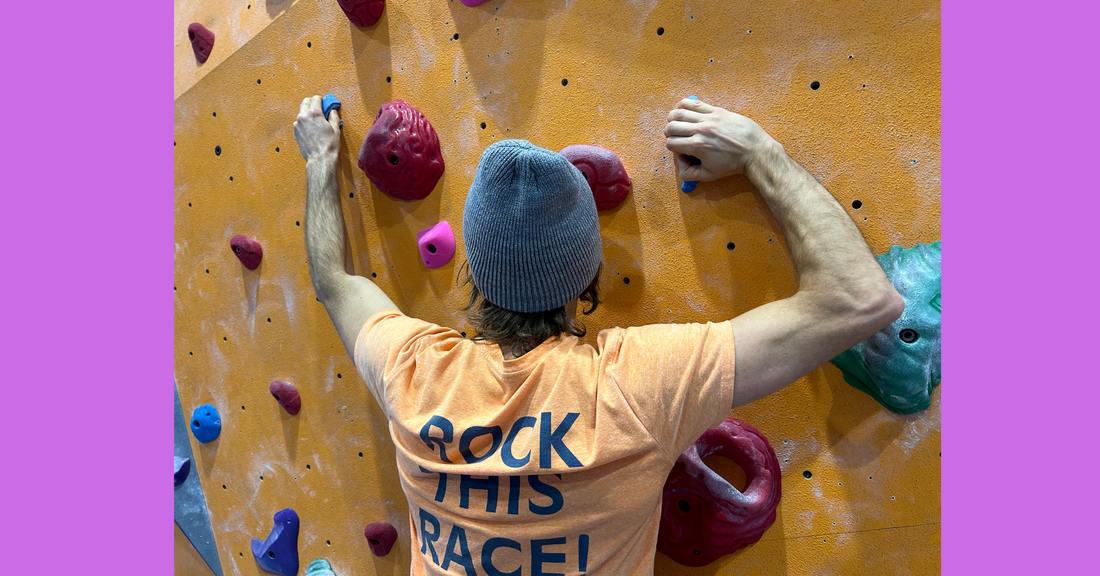What Exactly is a Gaston?
Gaston is a unique climbing move where climbers use their arms and palms to push outwards, as opposed to the conventional pulling motion towards the body. This technique involves positioning the palms facing out with the thumbs pointing downwards, like trying to pry open elevator doors from the middle.
The term “Gaston” is named after the French climber Gaston Rébuffat
The utility of a gaston comes from the ability to produce force perpendicular to the hand, allowing progression when no incut holds exist. The technique allows climbers to literally get a grip on otherwise slick or smooth rock faces.
How to Properly Position the Hands and Arms
A proper gaston hand position has palms in, elbows sharply bent and pointing out, thumbs down, while you push outwards against the hold using arm, shoulder and core strength. Mastering the body mechanics and technique is key to successfully performing this unique climbing move.

Developing Gaston Strength
Gaston moves require both finger strength through the hands and arms as well as strong shoulder stability. Here are some tips for training:
- Hang from fingerboard edges using a sideways grip to build tendon and ligament strength
- Campus board lateral sequences force horizontal shoulder stability
- Towel pull-ups with a sideways hand orientation
- Carry buckets or other objects with a gaston grip for everyday training
Targeted gaston training primes the fingers, hands and shoulders for the unique demands of this technique.
Using Gastons Effectively While Climbing
When a potential gaston hold presents itself during a climb, keep these tips in mind:
- Identify gaston opportunities during route inspection - scan for narrow crimps and edges
- Precision footwork is essential - keep weight centered over feet
- Consider thumb wrap - will it improve grip and reduce strain?
- Drop a knee if possible by twisting leg around hold while dropping knee to improve body position
Finding the right gaston handhold is only part of the equation - optimal foot placement and body positioning are equally important.
Common Mistakes
Many climbers make these key errors when first employing the gaston technique:
- Gripping too tightly leading to quick forearm pump and reduced endurance
- Inadequate body positioning failing to keep mass centered under the gaston hand
- Prioritizing hands first rather than finding optimal foot placement
Consciously avoiding these mistakes takes practice. Having an experienced climbing coach observe your gaston form can help identify areas for improvement.
When to Avoid Gastons
While the gaston technique expands handhold possibilities, it isn't always the best option:
- On overhanging routes with high consequences of slippage
- When other decent handhold options exist
- On extremely smooth or sharp-edged holds causing skin tears
As with any specialized technique, it's best avoided in situations which overly exacerbate the risks.
Drills and Exercises for Training
Here are some key gaston drills and exercises to incorporate into your training:
- Campus board gastons - Practice lateral sequences moving between sideways holds
- Shoulder rotation strength training - Improves stability, use resistance bands
- One-arm lock-off strength - Lock-off and hold on edges
- Gaston traverses - Practice lateral weight shifts on bouldering walls
At On The Rocks Climbing Gym in Elyria, Ohio, our route setting team incorporates challenging gaston moves on various walls to help members train this valuable technique. Be sure to test your gaston strength on our awesome overhanging routes! We also offer one-on-one gaston-focused coaching sessions - inquire at the front desk to improve your sideways grip skills.
The gaston technique opens up a world of possibilities on the rock. Add this unique grip to your skillset and unlock your full climbing potential!

